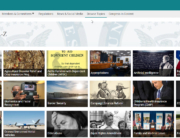by Lucy Curci-Gonzalez/ NYLI Executive Director
For the second pandemic year, the annual ARK Law Firm Libraries conference went virtual. I attended this highly regarded program from my home office where I attended a number of excellent sessions that delivered high-quality content on a usable platform.
ARK’s annual Law Firm Libraries program is noted for bring together leaders from the legal information industry and outside experts for a high-level presentation. The April 27-28, 2021 program got off to a strong start with the keynote address by a respected business school professor, a specialist in applying neurobiology research to organizational behavior. Melvin Smith, Ph.D., BCC Professor of Organizational Behavior at Case Western Reserve University’s Weatherhead School of Management talk “Expert Perspective on Change Management – Tap into Emotional Intelligence Principles to be a Change Agent at Your Firm” clearly introduced concepts on the neuroscience of leadership, communications , and emotional intelligence skills. These are all skills law librarians need to master in order to facilitate and embrace change in their organizations especially in these times of dramatic shifts in our professional and personal lives.
Dr. Smith put the science behind human communication skills in clearer prospective for me. After years of attending talks on communications skills filled with psychobabble and buzzwords, it was illuminating and refreshing to hear the human brain science underlying the esoteric language of earlier presentations. Those programs all left me confused as to whether I was a red, blue, ruby, or sapphire style communicator. Smith showed that the human brain processes analytic and empathic function in different parts of the brain. He explained why it is often difficult to deal with interruptions and other responses when toggling between projects as most reference librarians do. He further showed that the positive emotional attractors (PEA) arouse positive activity in the empathic region of the brain facilitating vision-based change. While negative emotional attractors (NEA) can evoke a physiological fight-or-flight response and opposition to mandated change.

The adage, “start with the good news before dealing with the bad”, is not trite saying, but is based in science. It has implications for SWOT analysis and strategic planning. Smith advises starting with the positive big idea and working back from that keeping the analysis positive. Starting a strategic plan with a BHAG (pronounced “Bee Hag,” short for “Big Hairy Audacious Goal”) is not management consultant jargon after all but is based in human biology!

I plan on reading several of Smith’s articles in the Harvard Business Review and applying these concepts leading my law library through the changes ahead of us.
























